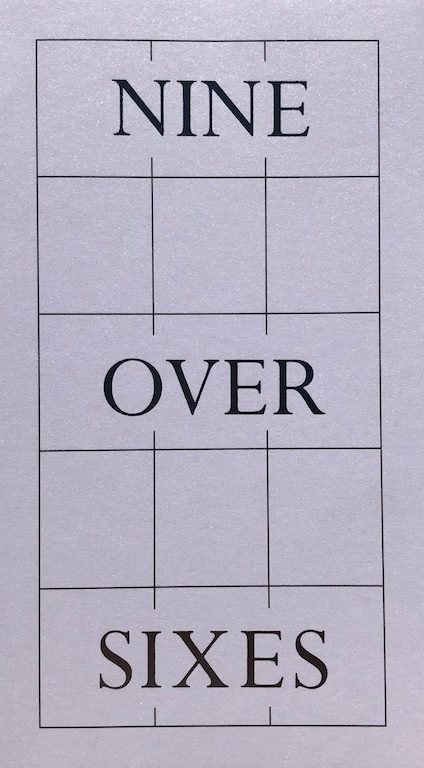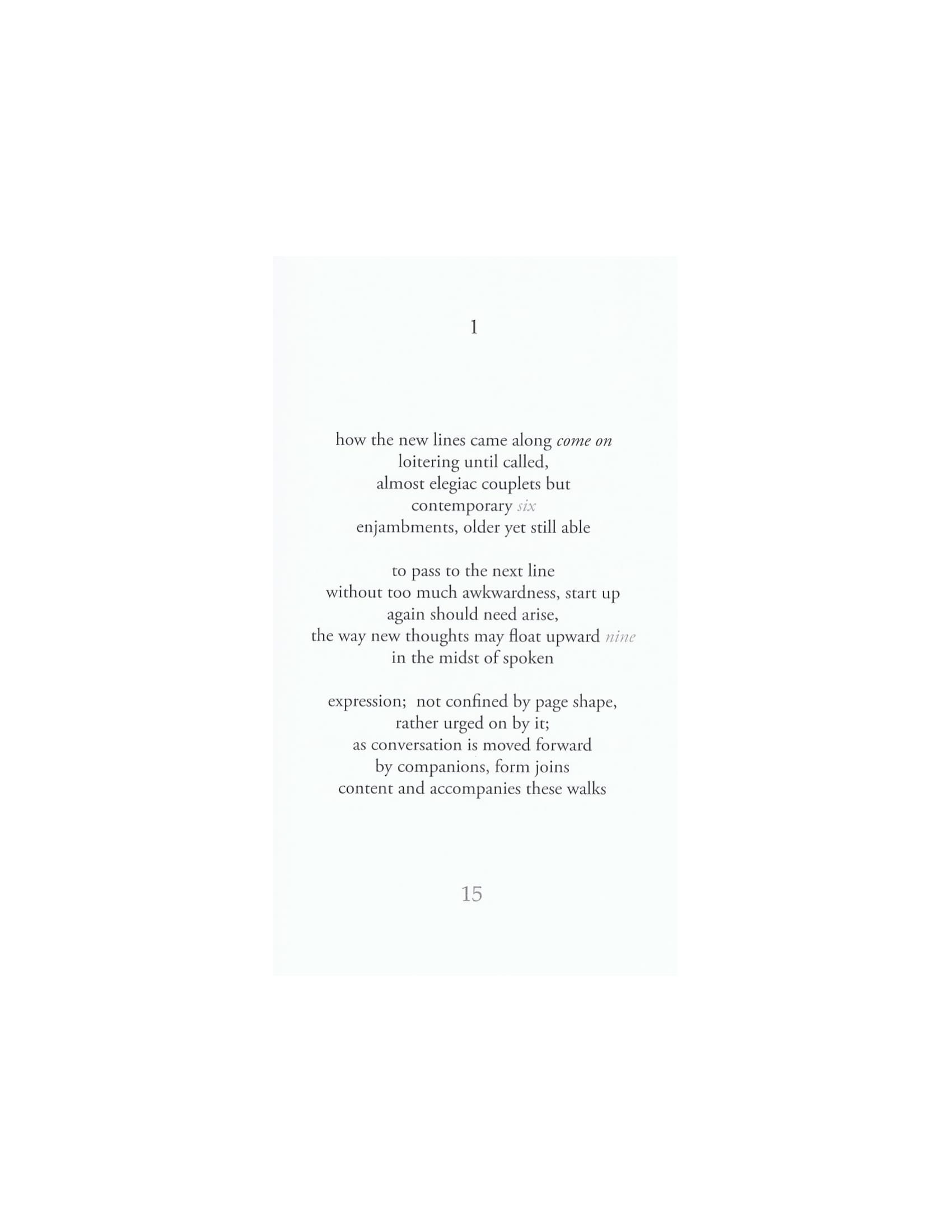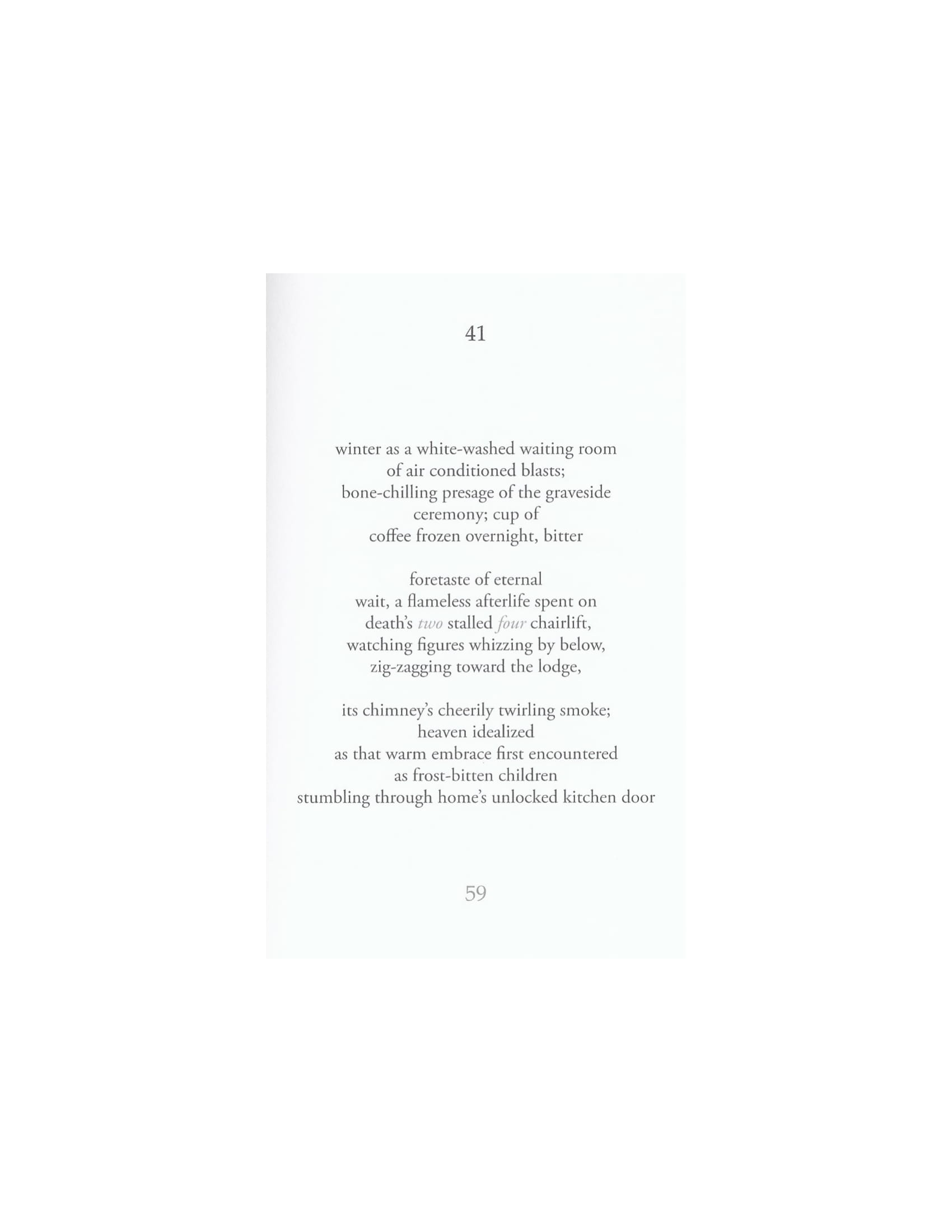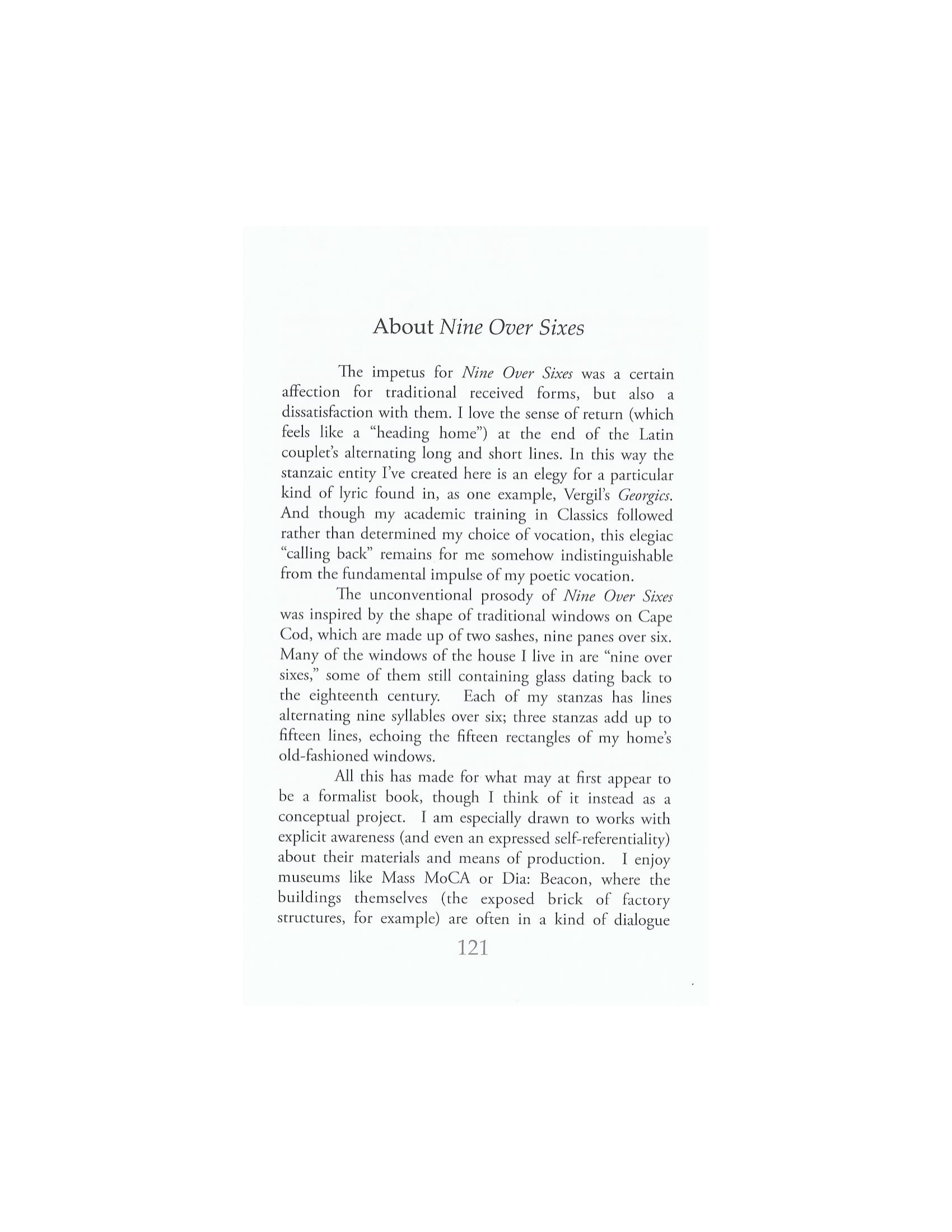“The impetus for Nine Over Sixes,” notes Mary Maxwell in the postscript of her fourth collection of poems, ”was a certain affection for traditional received forms, but also a dissatisfaction with them.” The unconventional prosody of Maxwell’s poems, inspired by the shape of New England’s “nine over sixes” windows, pays homage to the elegiac stanzas of Vergil’s Georgics. Though in their subject matter her lyrics relate the poet’s daily encounter with Vergil’s “country gods,” their concerns, as she writes, also “overlap with contemporary issues of near-universal surveillance; true solitude, in all its painful yet pungent delicacy, is in terrible peril. What is heard, of course, is often limited by what has been listened for: Nature provides the increasingly rare luxury of quiet, the ability to hear oneself think.”
Experimental in form and impulse, the formalism of Nine Over Sixes incorporates the imposition of the digital realm into their actual lines, gray numbers marking certain counted syllables as whispered percussion. “Such random-feeling interruptions form the sound texture of contemporary life,” Maxwell observes in her afterword, “what with the constant intrusion of the virtual realm, its buzzing texts and cell-phone ringtones making themselves known even in the midst of a forest.” Innovative yet deeply felt, these lyrics both note the problem and propose its solution. The lyric poem attempts to recreate and record an individual’s response to nature and art, that dimension of “overtones” which forms such an essential component of human experience.
April 1, 2015
ISBN 978-0-9802053-5-0
128 pages
5.5 x 8.5 inches




